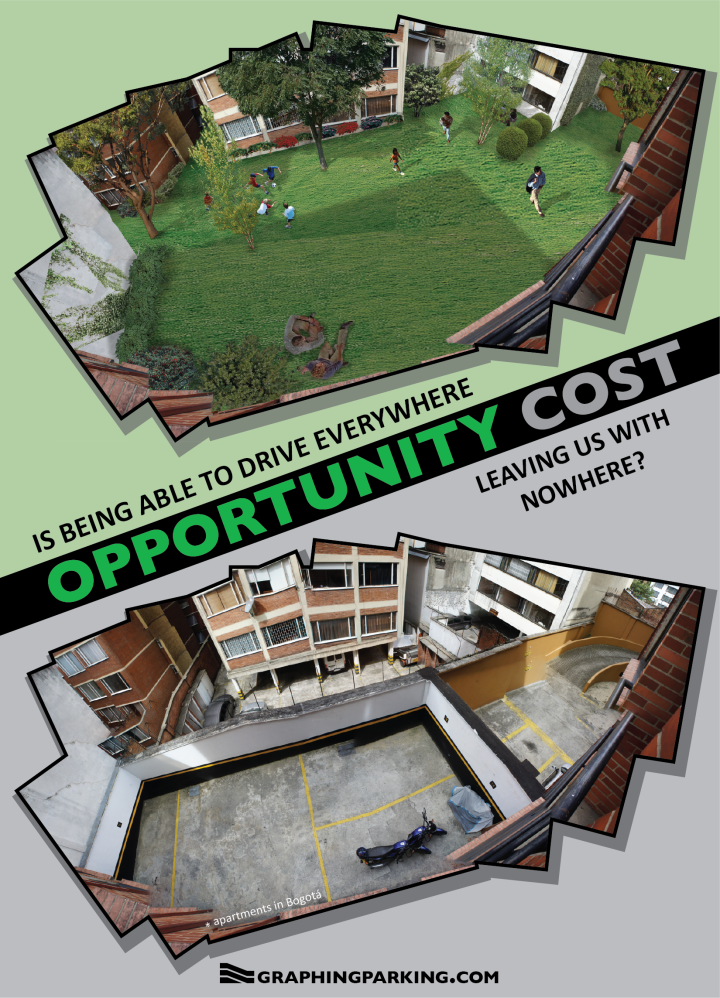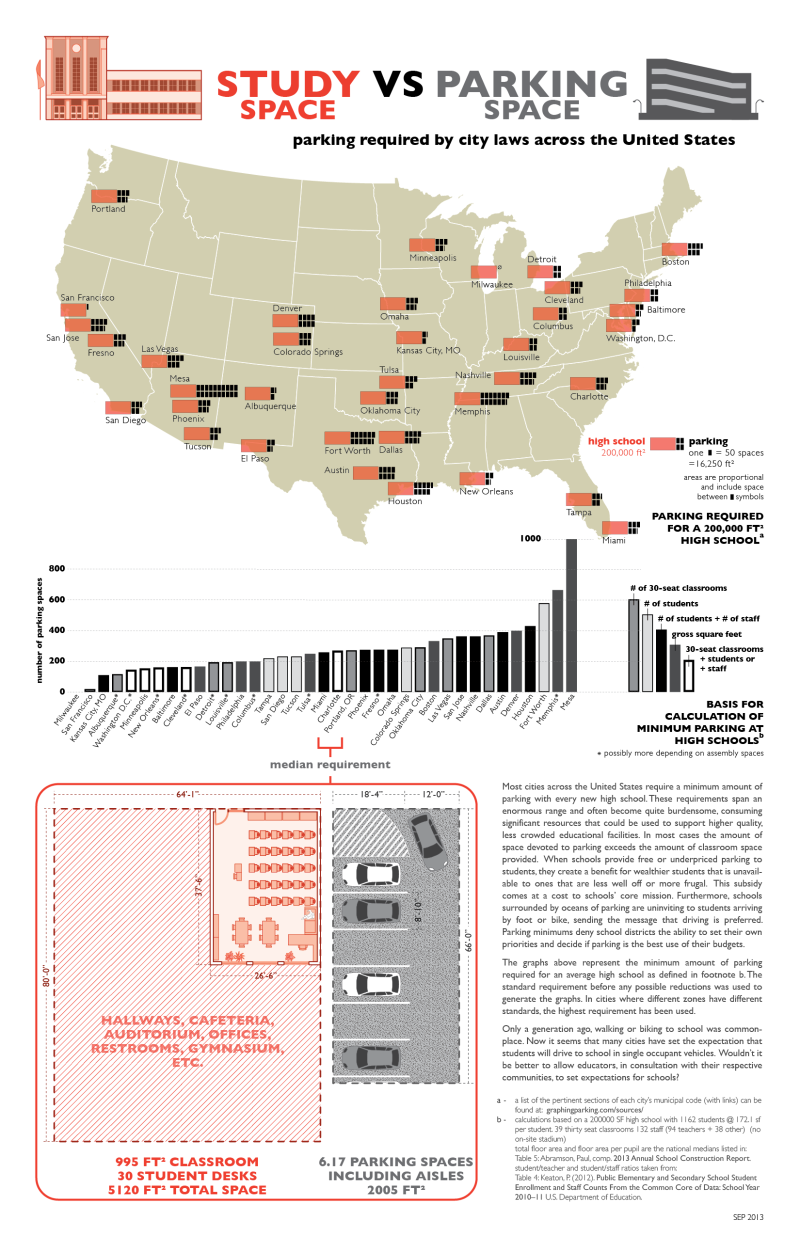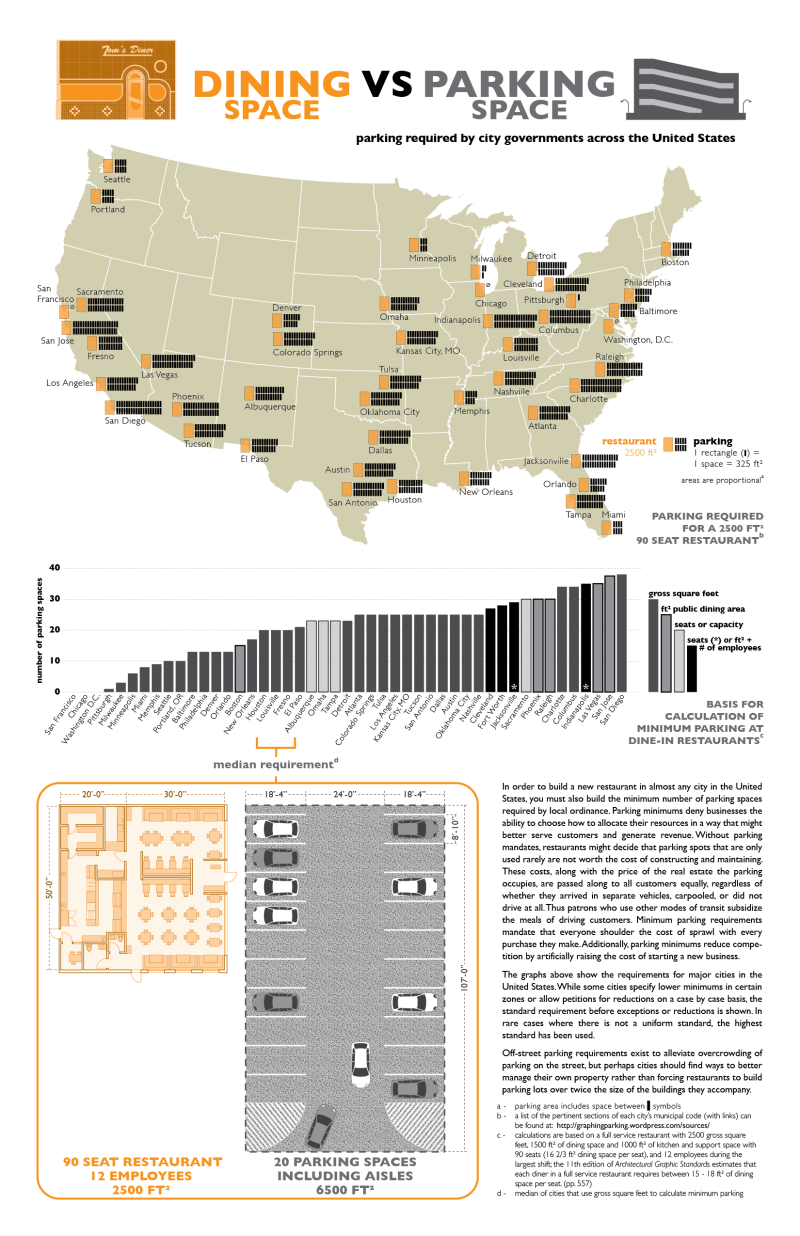Sometimes data and reason aren’t enough to change people’s minds. For all the level headed arguments against parking minimums, about how current policy restricts housing supply and drives up costs, and about the unfairness of hidden subsidies for drivers at the expense of everyone else, the knee-jerk, emotional response resisting change will always be a powerful force. Those wishing to affect positive change have not only to construct reasoned arguments for it, but to tug on heartstrings as well. That’s the kind of appeal that The Sightline Institute made recently in the article “Ugly by Law”. It’s the kind of appeal that Park(ing) Day makes every year. By seeing a vision of what could be, people will also view the world as it exists with new eyes. Many have become numb to car dominated landscapes and lifestyles. Providing a clear vision of what could have been and what we are missing out on, will bring to life the better world that will be if the space dedicated to cars can be right-sized. Showing images and examples of transformation from an on the ground, human perspective will be an important part of helping others to see that what exists now is not an inevitability, but a choice. What does our (institutionalized) obsession with cars cost us?
While the above graphic features the view from my apartment in Bogotá, Colombia, I hope it will have some universal appeal.




